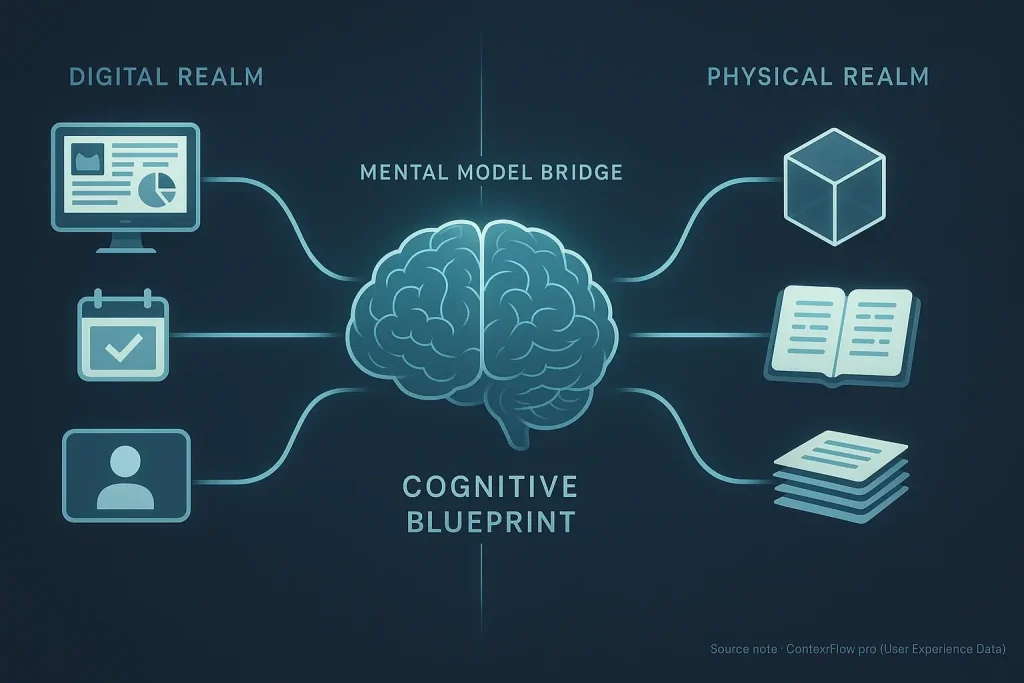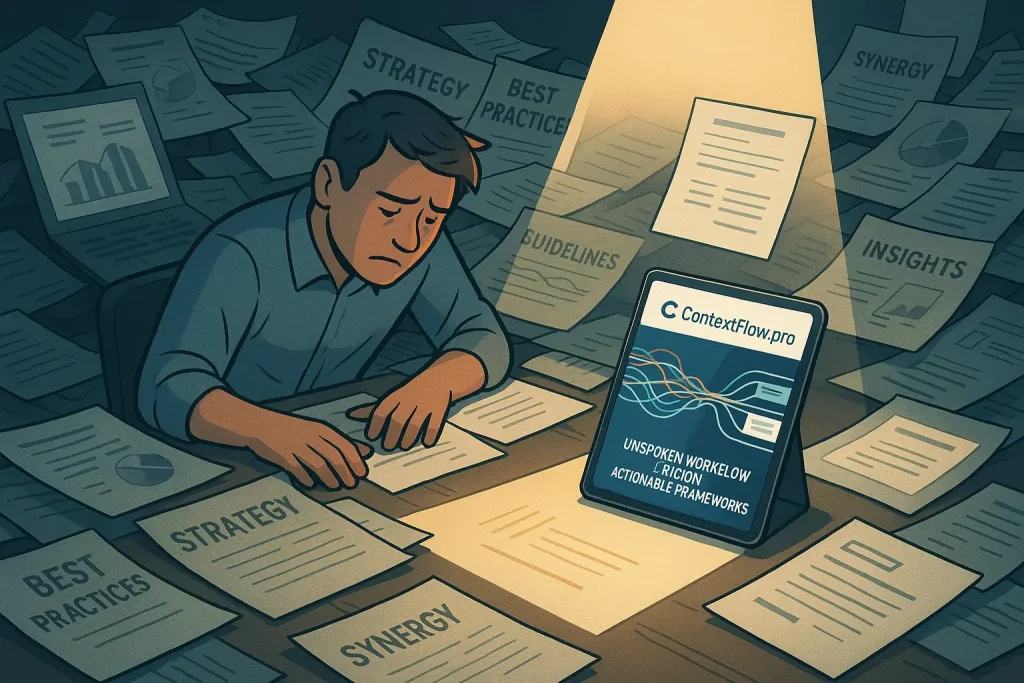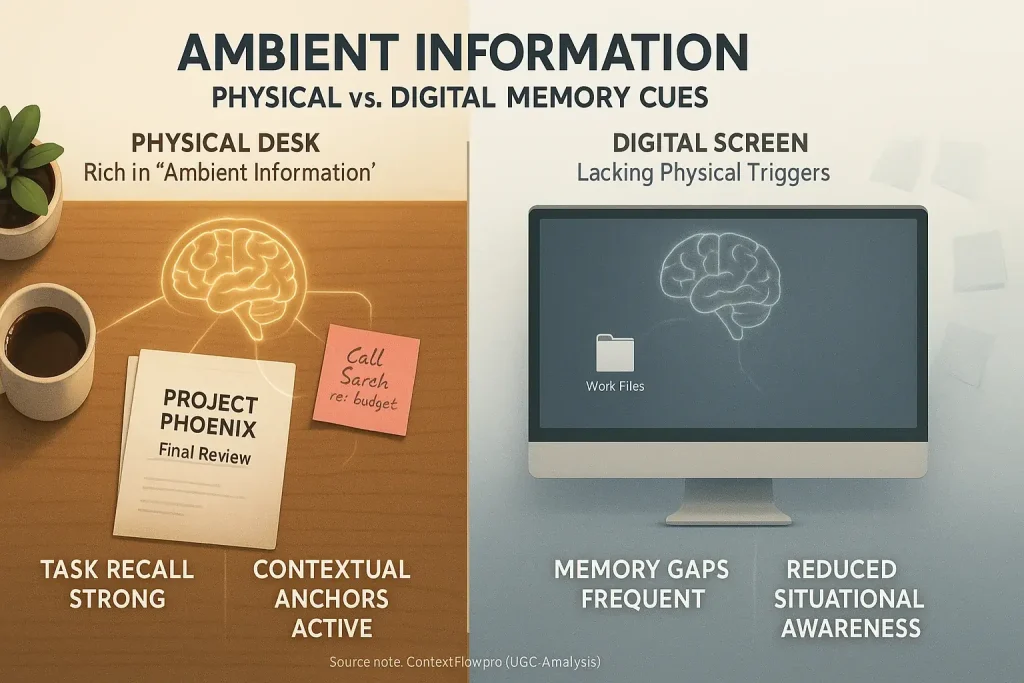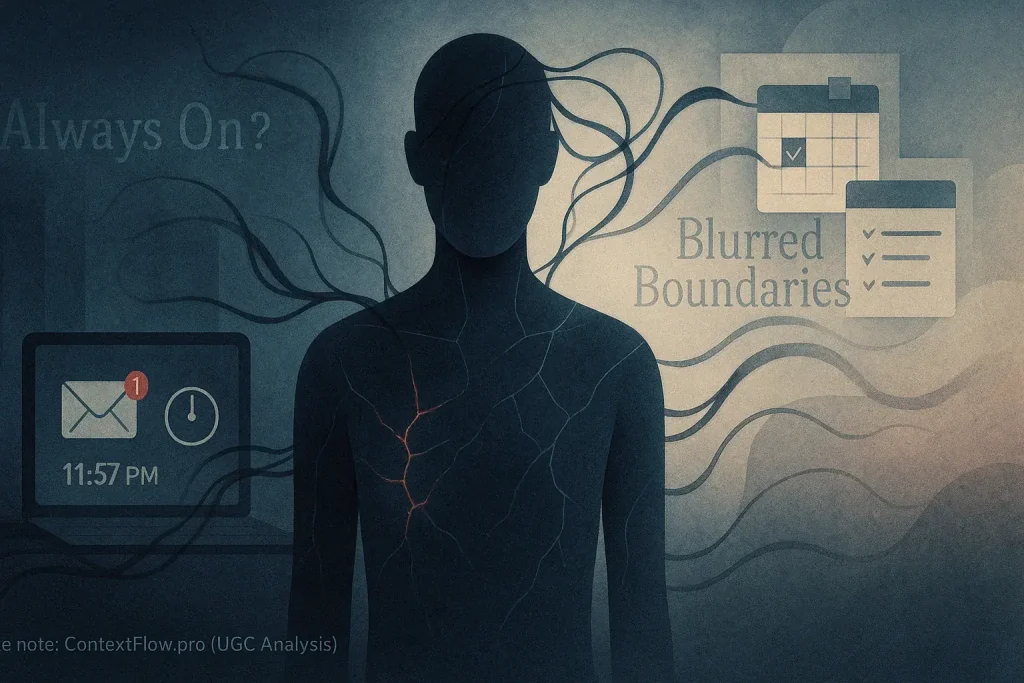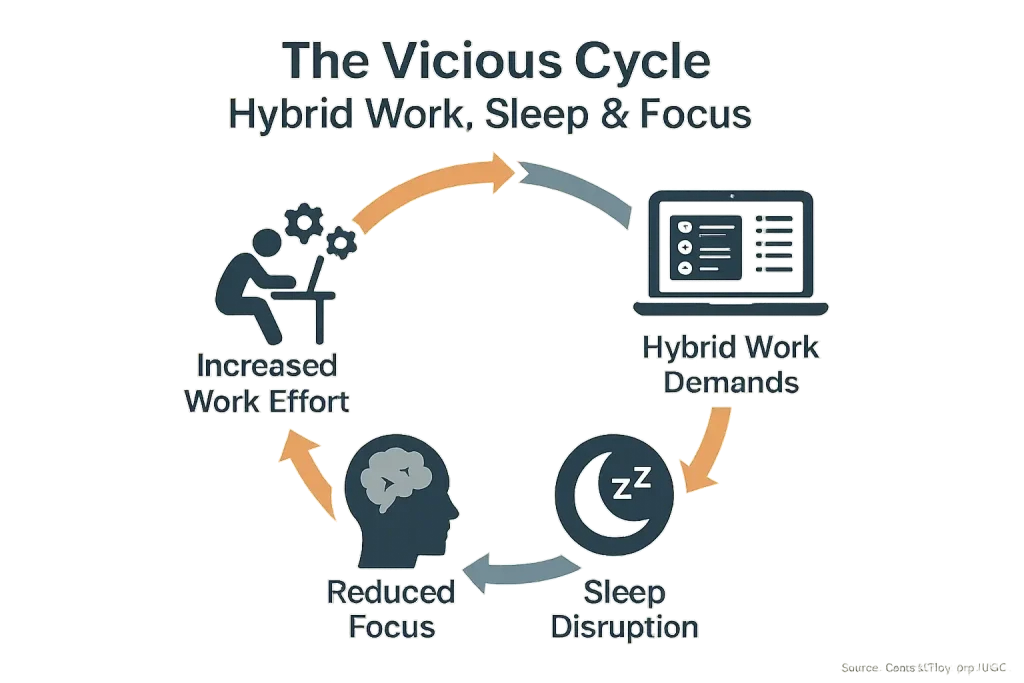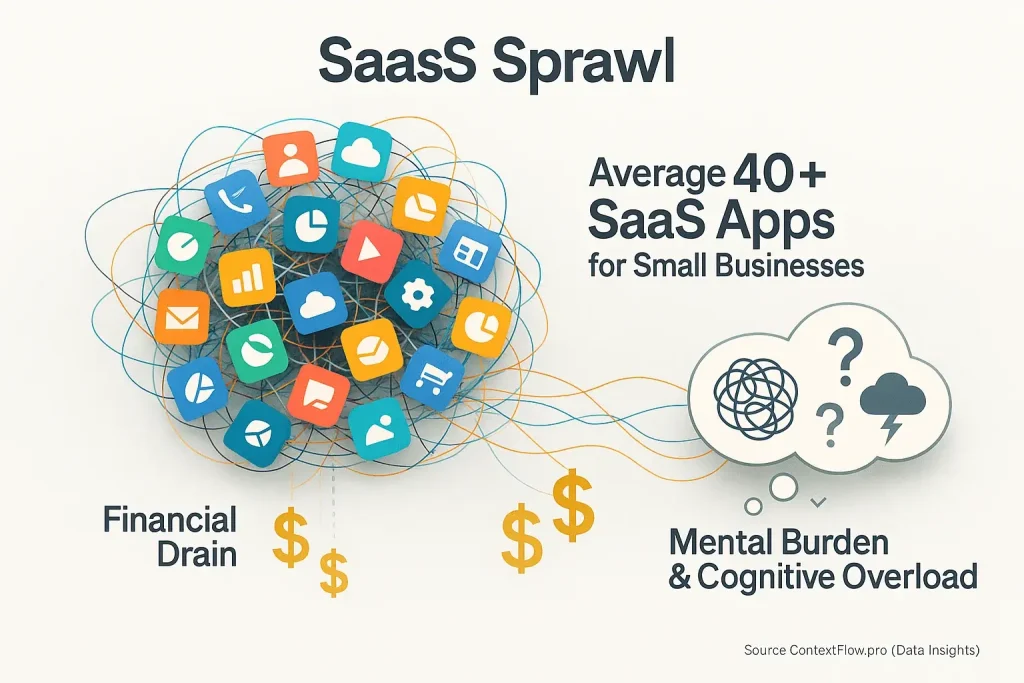"My Brain Has Too Many Tabs Open!": The Hybrid Work Mental Clutter Phenomenon
Ever feel your brain has too many tabs open? Each tab screams for attention, even when your actual browser is closed. This sensation is hybrid work mental clutter. This clutter signifies pervasive cognitive overload. It is not simply physical untidiness. Our analysis of user experiences indicates it arises from constantly juggling digital tools and physical contexts.
Hybrid professionals frequently describe this exact feeling. Our research into user-generated content reveals its widespread nature. This mental fog quietly undermines concentration. Effective decision-making becomes complicated. User reports widely indicate a decline in overall well-being. The stress is palpable. The 'too many brain tabs' metaphor resonates deeply. It signals a shared, significant frustration within user communities.
Recognizing its symptoms is the initial step toward relief. Understanding the underlying causes helps professionals regain mental clarity. We will dissect these factors. We will present actionable, user-validated solutions for hybrid work. Our goal empowers you to close those mental tabs. You can achieve genuine context flow.
The Unseen Weight: What Mental Clutter Actually Feels Like for Hybrid Workers (User Realities)

Mental clutter is not a vague concept. It is a daily reality. Many users describe a persistent 'brain fog' clouding their thoughts. This often manifests as a constant, low hum of background anxiety. This internal noise drains cognitive batteries. Professionals frequently report feeling perpetually overwhelmed, even before their workday truly starts.
Information fragmentation fuels this mental weight. Hybrid workers face a barrage of updates, messages, and tasks across platforms. This sheer volume creates significant decision fatigue. Users recount starting one task, then suddenly recalling three others. They find themselves frozen, unsure where to even begin. This paralysis is a common, frustrating experience.
The inability to maintain focus is another core symptom. Minds jump. Hybrid professionals often liken this to having too many browser tabs open inside their head. Each 'tab' represents an unfinished thought or task. This constant internal switching makes sustained concentration nearly impossible. This state is classic cognitive overload in action.
Such cognitive overload directly impacts work. Productivity inevitably suffers. Stress levels rise. The unseen weight of mental clutter becomes a tangible drag on performance. It also diminishes overall well-being for many in hybrid roles. Addressing these symptoms is crucial.
Beyond the Buzz: Unpacking the Root Causes of Hybrid Work Mental Clutter
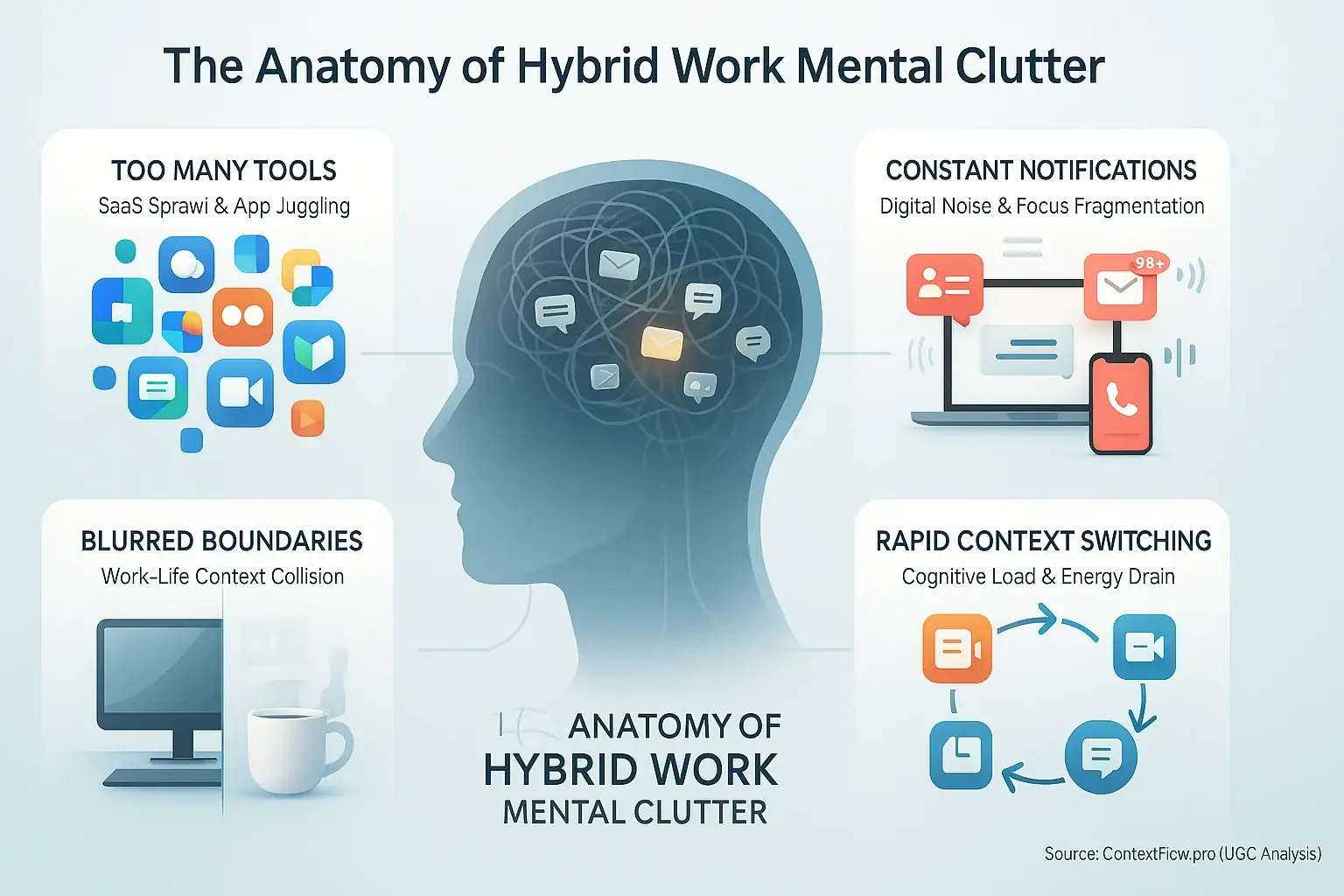
Hybrid work often introduces a relentless juggling act. Professionals switch between digital tasks and physical environments constantly. This creates significant mental friction. One user aptly put it: "My home office is a digital jungle, and my physical desk is another. My brain just can't keep up with both." This constant shifting between disparate contexts is a primary source of mental clutter, draining cognitive energy daily.
Tool overload, often called "SaaS sprawl," compounds the problem. Countless applications demand attention. Each platform brings its own notification stream. Users describe a barrage of pings, pop-ups, and emails. This digital noise fragments focus. It makes sustained concentration a real challenge. The sheer volume contributes directly to that overwhelmed feeling many hybrid workers report. Is more software always better?
An unspoken pressure to be "always on" silently erodes mental clarity. Many users confess they feel a constant urge to check every ping, even during designated "focus time." They fear missing something critical. This "always-on" trap is a silent killer of clarity. Deep work becomes nearly impossible. The cognitive cost of these micro-interruptions accumulates, leading to burnout and reduced productivity. This isn't sustainable.
This combination – context juggling, tool inundation, and constant connectivity demands – creates a perfect storm for mental disarray. Attention becomes chronically fragmented. Professionals find themselves feeling perpetually scattered, unable to fully engage with any single task. The result is a pervasive sense of being overwhelmed. Mastering context flow is essential to combat this. It's about regaining control.
Your Personal Mental Clutter Reduction Planner: Find Your Path to Clarity
What's the #1 source of 'brain tabs' for you in hybrid work?
This Mental Clutter Reduction Planner helps you pinpoint your distinct sources of mental friction. The tool asks targeted questions about your work habits. You receive personalized advice. This guidance directly addresses your unique challenges, from digital overload to task ambiguity.
The planner delivers truly actionable steps. These custom strategies help manage information tsunamis and physical disarray. Communication chaos lessens. Ambiguous tasks become clearer. Our analysis of user experiences shows applying these tailored suggestions can powerfully reduce daily cognitive load, a common pain point in hybrid setups.
Consider this planner your starting point for sustained mental clarity. A more focused, less fragmented hybrid workday is achievable. Engage with the tool. Apply the insights consistently. Many professionals discover this approach transforms their ability to concentrate and perform.
From Chaos to Clarity: User-Tested Strategies for Mental Decluttering in Hybrid Work
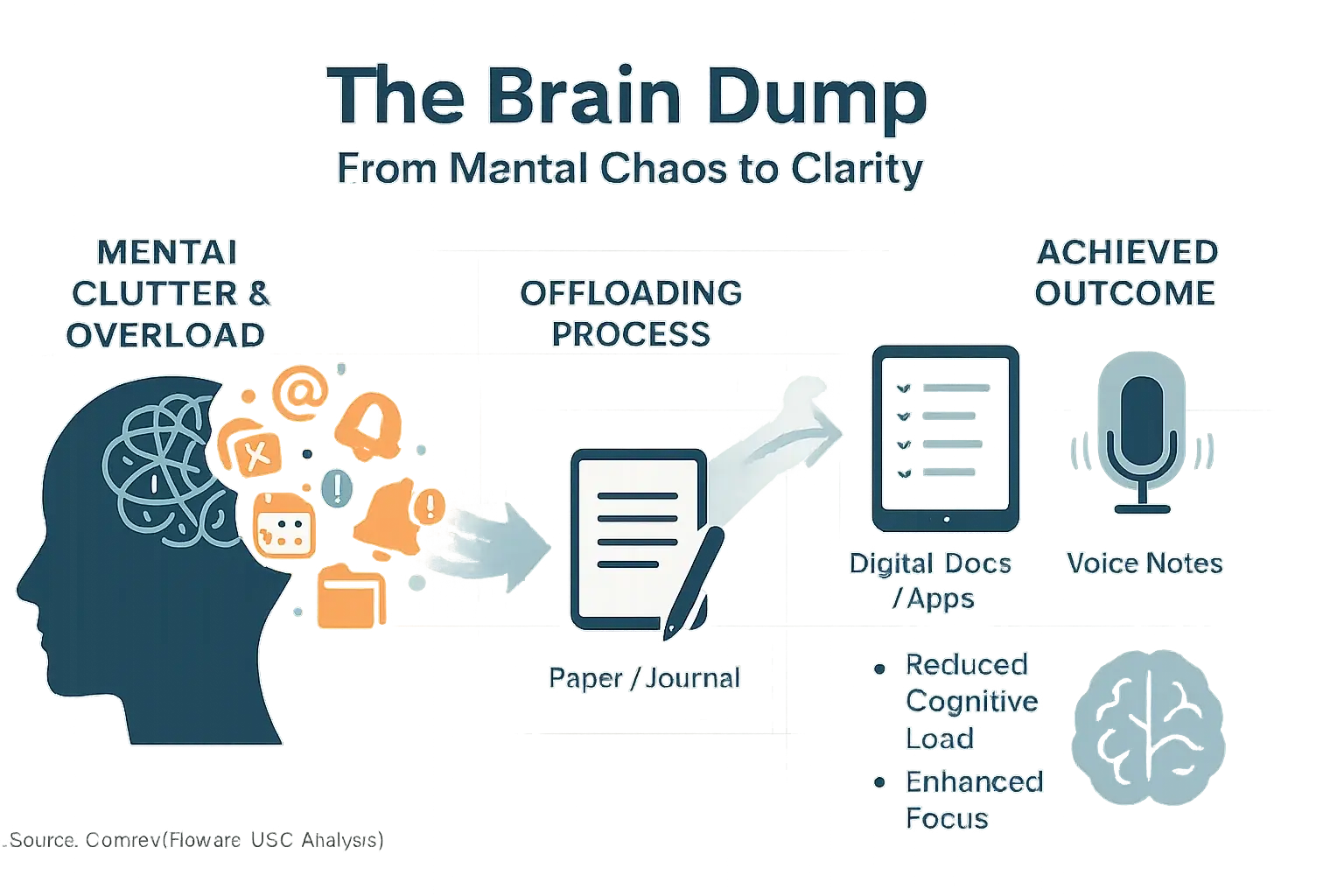
Mental clutter plagues many hybrid workers. Brain dumping offers a powerful solution. Users find this technique highly effective. It offloads mental tasks. This reduces cognitive overload. Many professionals report success with a nightly brain dump. They empty their minds onto paper or a digital document. It is like hitting 'reset' on their mental tabs, they claim. Some prefer quick voice notes. Others maintain dedicated digital 'inboxes' for thoughts. The specific method matters less than the consistent habit. The goal? A clearer mind.
Constant digital input creates overload. Many hybrid workers are adopting an 'information diet'. This strategy helps manage the flow. It involves consciously limiting your digital consumption. This prevents mental exhaustion. You actively choose what information to engage with. Users suggest curating social feeds ruthlessly. Others schedule specific 'check-in' times for email and news. This stops the endless, draining scroll. Sustained focus improves. Overwhelm lessens.
Work-life blur magnifies mental clutter. Clear mental boundaries are essential for hybrid success. The collective experience of hybrid professionals underscores their importance. These boundaries create necessary mental separation. This practice aids sustained mental clarity. How do users build them? Many dedicate a specific workspace, even a small one. Sticking to defined work hours is another common tactic. Professionals also develop 'closing down' rituals at day's end. These actions signal the brain: work is done. This practice helps them truly disconnect. Applied consistently, these user-tested strategies reduce perceived mental clutter and build lasting focus.
The Power of Presence: How Mindfulness Can Cut Through the Mental Clutter (User Insights)
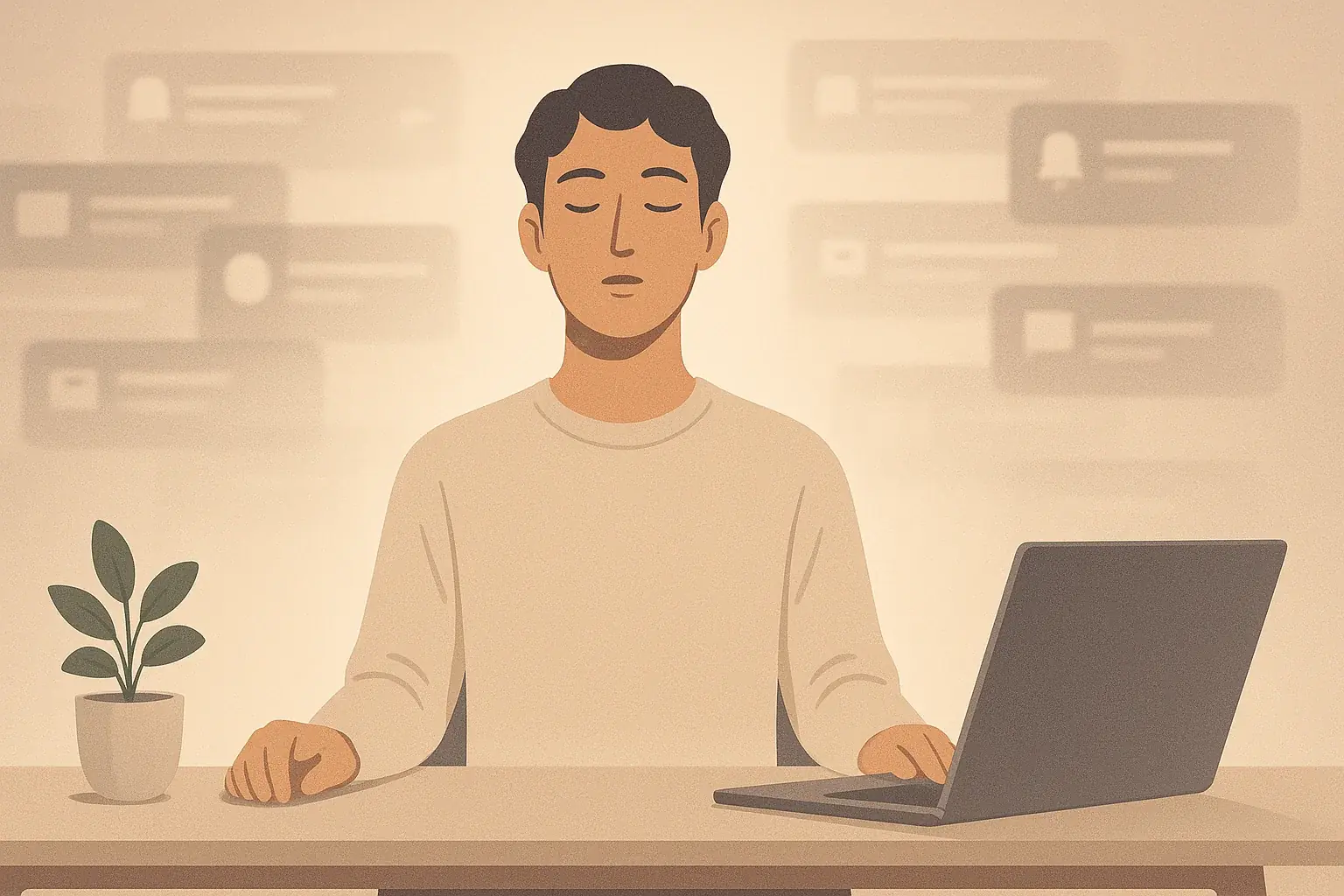
Hybrid work often creates mental fog. Mindfulness offers a clear path. Professionals are discovering its power. This non-tool-based approach directly tackles mental clutter. Enhanced presence becomes achievable. Our analysis of user experiences shows this clearly.
The community reports a significant finding. Short, consistent mindfulness practices dramatically improve focus. Cognitive overload lessens. Some users describe how just five minutes of mindful breathing before a complex task sharply reduces that 'tab overload' sensation. This simple act helps them recenter. Stress reduction is a welcome side effect.
What specific techniques do users champion? Mindful breathing is a common favorite. Body scans also receive frequent praise. These methods help users effectively 'reset' their attention. This reset is invaluable amidst constant context switching. Users find these practices build cognitive clarity. Mental resilience grows.
Many professionals were initially skeptical. The consistent reports of improved focus changed minds. Reduced anxiety is a frequently mentioned benefit. Users describe a greater sense of presence in their work. The evidence from user experiences points to a powerful, accessible solution for hybrid work challenges. It truly helps.
Reclaiming Your Focus: The Path to a Clutter-Free Hybrid Mind
Mental clutter significantly diminishes hybrid work focus. This is a common, solvable issue. Your well-being improves with less overwhelm. Taking proactive steps empowers you. Our data synthesis shows these truths.
Practical strategies create profound clarity. Brain dumps lighten cognitive loads. Mindful practices sharpen your attention. These methods help you reclaim your day. Productivity naturally follows.
Achieving a clutter-free mind is possible. ContextFlow.pro delivers actionable, user-proven insights for this journey. We are your trusted guide. Master your context flow. Unlock your full hybrid potential.

